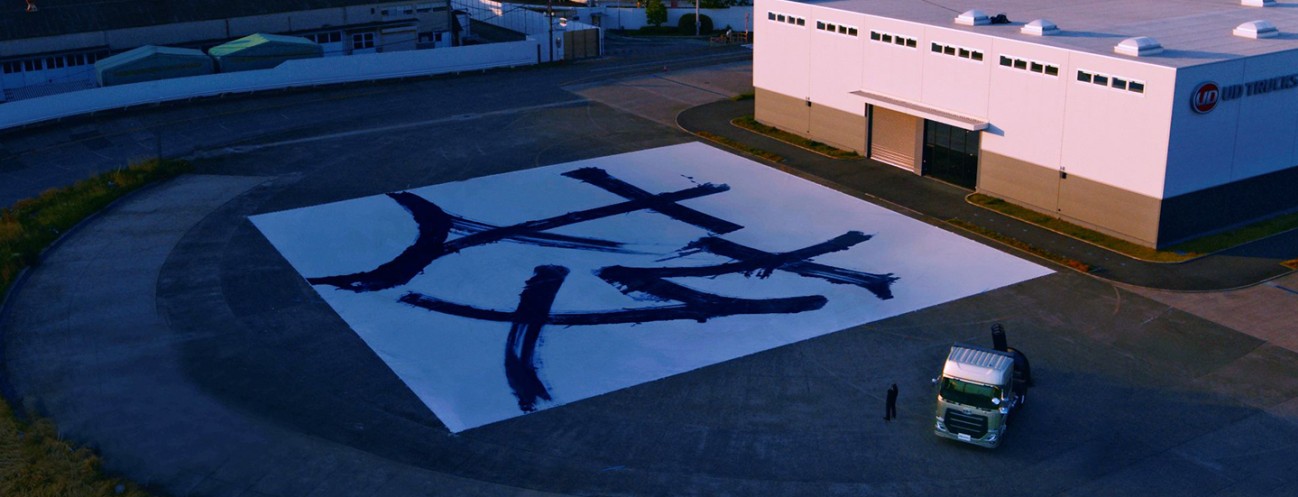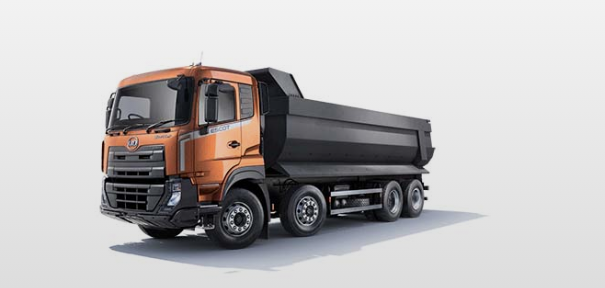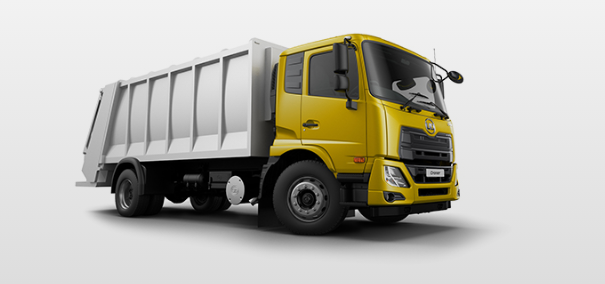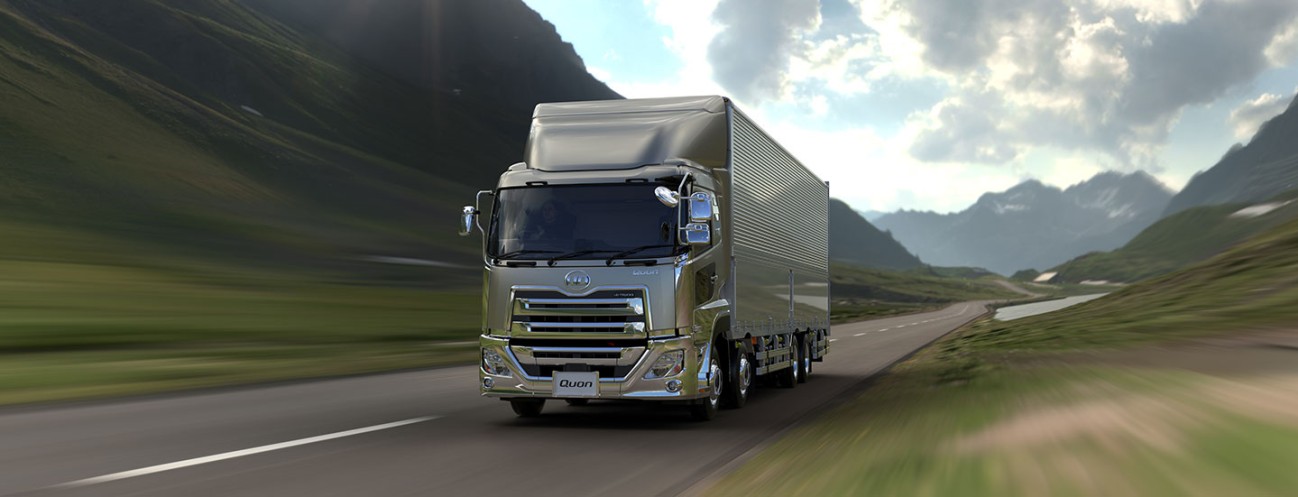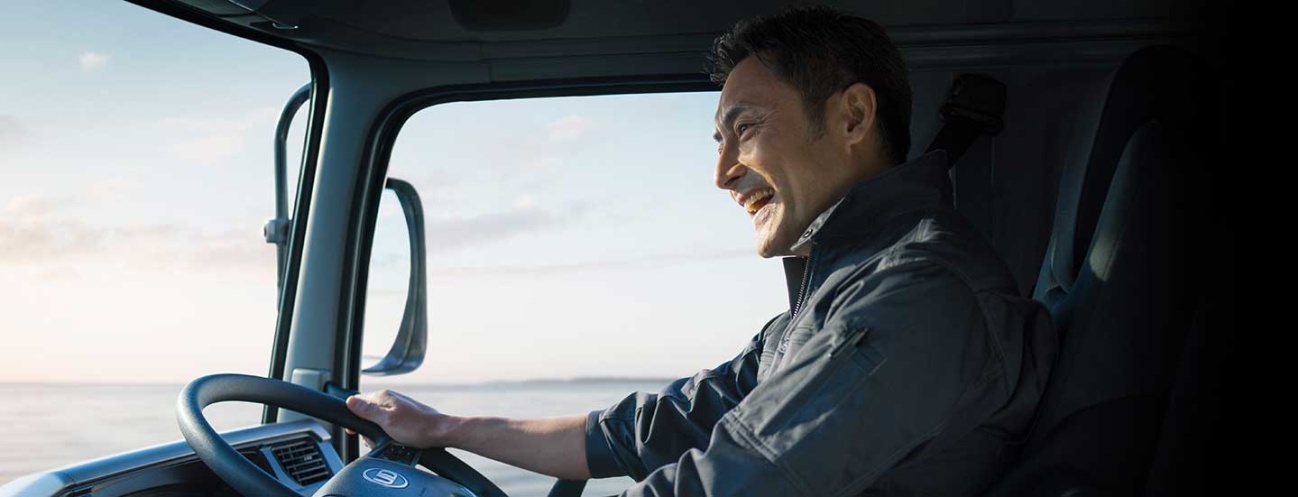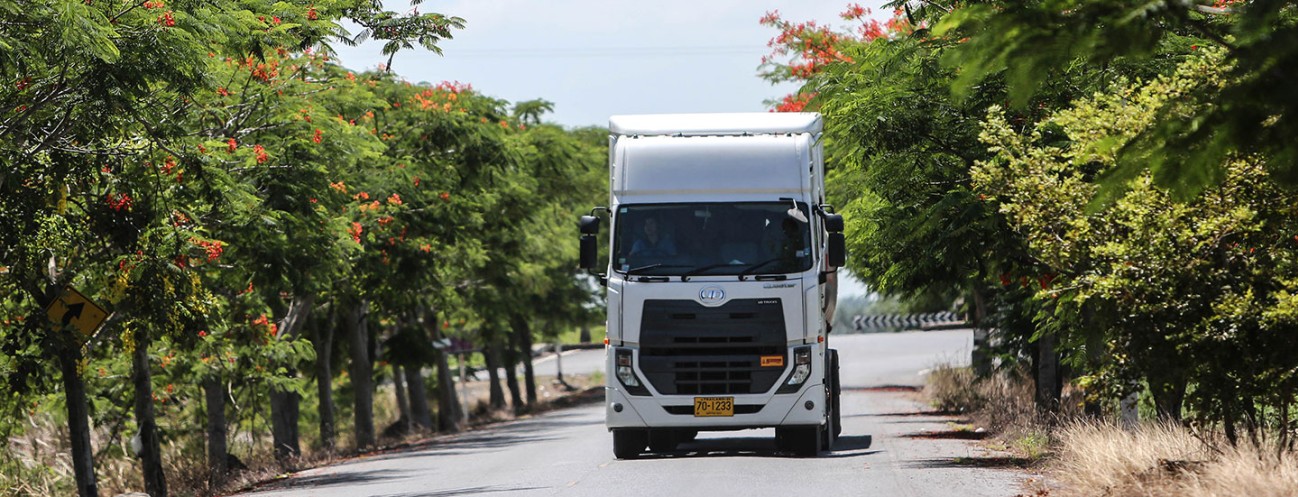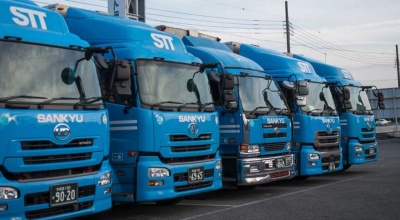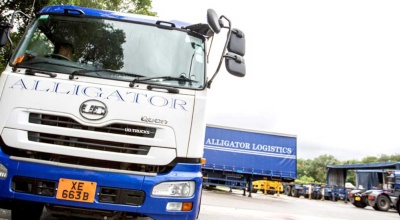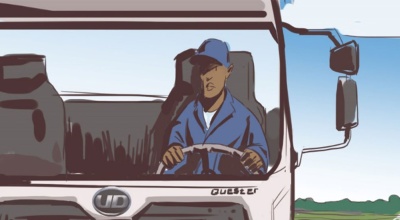The roads in Thailand have a something of an image problem, and one that is very well deserved. The country suffers one of the worst death rates in the world for traffic-related incidents.
That doesn’t worry Jariya Khampakdee too much as she sits high and safe in her UD Quester, enjoying the open road and loving the spectacular scenery.
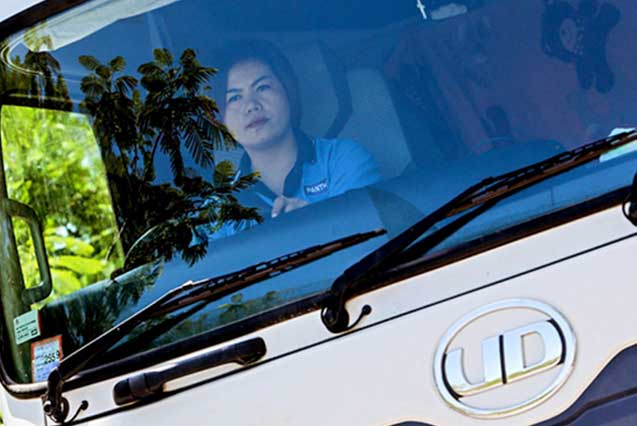
Jariya is one of very few women in Thailand’s trucking business, and moved into the field after several years spent driving passengers around hazardous roads in battle-scarred minivans. Behind the wheel of her 11-liter UD Quester, she explains how she left her hometown in Roi Et province and started to work as a truck driver in Panthip Transportation Service.
Both the good-looking truck and its female driver often attract intrigued glances, and Jariya has found that people respect her for working in a heavily male-dominated industry. “Most people who see me driving a truck show their support. They put their thumbs up or give me a smile. Although they are often initially surprised, they do respect me,” she says.
The pride of a trucker
Jariya works about 60 hours a week and drives averages more than 500 kilometers per day. The long hours, however, don’t bother her and the loneliness is apparently easy to stave off. “Every time I get into my truck, I leave all my stress, problems and worries behind. I have a passion for my job.” She loves her UD Quester, praises the amenities and excellent ergonomics of the truck.
The demanding hours and distance from her hometown mean she doesn’t often see her family, who still worry about the road she has chosen. “It shocks them that I work in this sector because they all think it’s a dangerous career. But my truck is my life. If it is safe, my life is safe too. Every time I get into my Quester I feel secure.”
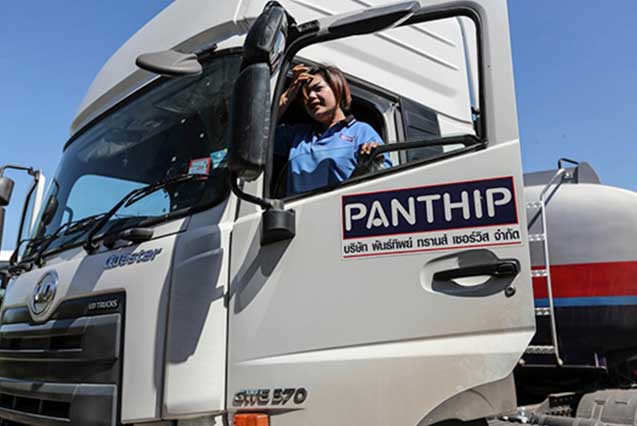
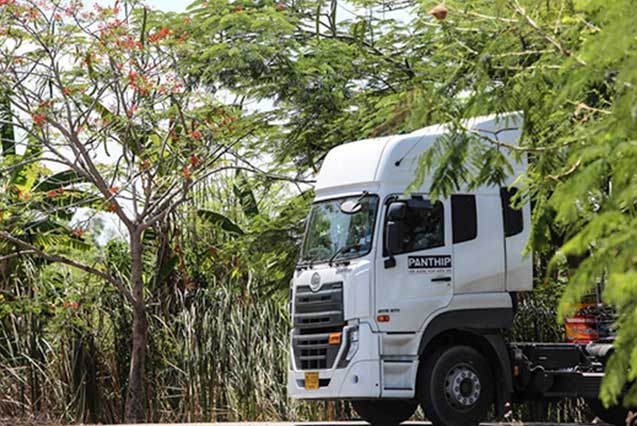
Great to drive and cheap to run, UD Questers strengthen the Panthip’s competitiveness
Great on the road, the latest addition to Panthip’s 10-strong fleet, which chalks up an average 100,000 kilometers every month, have also proven to be a great investment business-wise.
Always been fond of Japanese vehicles, Sitthikorn Sornsuchittra, the company’s founder and owner, didn’t need much convincing to switch to UD trucks in early 2014. “They are a mix between European and Japanese technology – it’s the best of both worlds.”
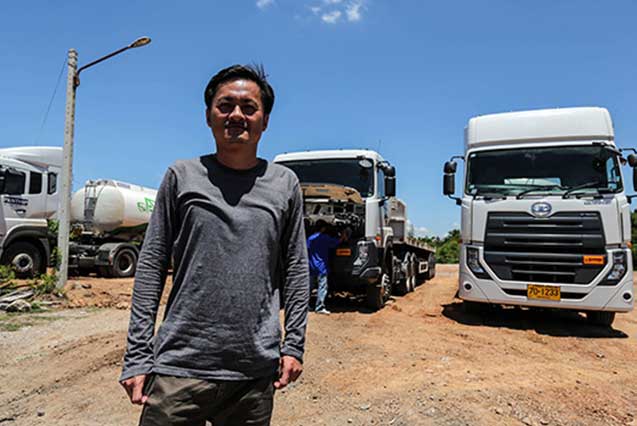
Always been fond of Japanese vehicles, Sitthikorn Sornsuchittra, the company’s founder and owner, didn’t need much convincing to switch to UD trucks in early 2014. “They are a mix between European and Japanese technology – it’s the best of both worlds.”
In fact, Panthip has experienced fierce competition from rival companies when the availability and low price of alternative fuels resulted in the industry moving away from diesel fuel. “I sold off two of my trucks due to the increase in competition and really started to worry, I mean, I couldn’t keep up,” he says. “But then I discovered UD trucks, and while the UD trucks run on diesel, they consume much less fuel, as well as boast torque specifications that few other trucks have. I’m saving a lot more money now, and I’m back in the game.”
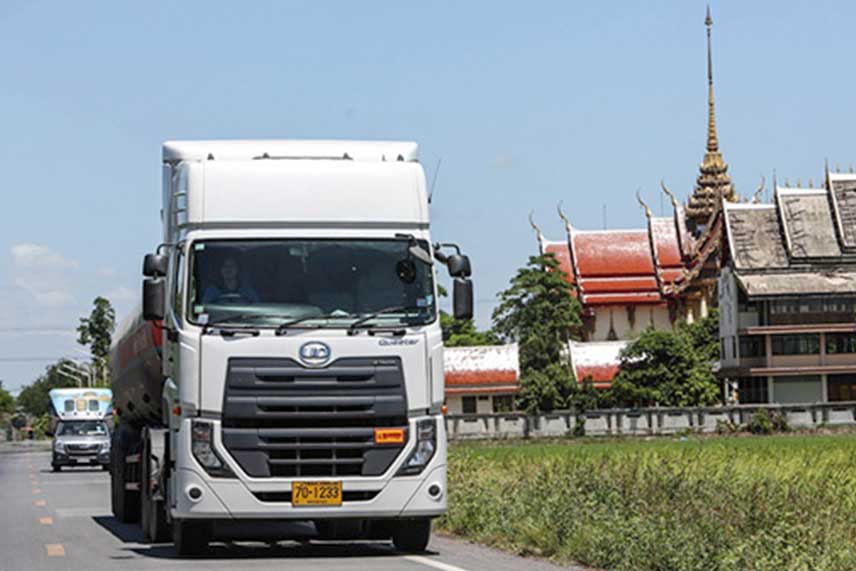
This is a man’s world – but for how much longer?
Although there’s no data on the total number of female truck drivers operating in Thailand, the general consensus is that the figure is on the up. Sitthikorn discovered that since the arrival of Jariya, she has become indispensable in boosting morale on the team. Sitthikorn believes that the emergence of female drivers in the industry has improved discipline among the male ranks and even made them more competitive.
Jariya also says that ever since she started in 2010, there’s been a noticeable increase of female drivers. With new trucks such as Quester requiring less physical strength to be driven, and an evolution of mentalities in the transportation sector, she will definitely be joined by more and more female colleagues.
